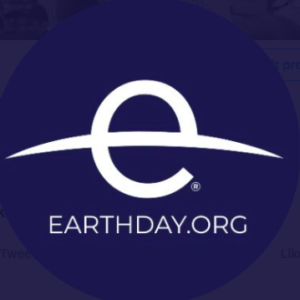Conservation and Biodiversity
Fact Sheet: Bees
March 23, 2022
Fact Sheet: Bees
While the population of all species has declined over the last few decades, the dramatic drop in the population of bees has increasingly been of concern because of the important role they play as pollinators. Without bees, many of the world’s most important crops would fail and directly affect the food supply of humans and countless other species.
- There are 20,000 distinct bee species around the world, with 4,000 of them in the United States alone. From 2006-2015, approximately 25% fewer species were found. Under the best scenario, thousands of bee species have already become too rare.[1] Ultimately, a decline in bee diversity driven by either increasing rarity or irreversible extinction will affect the pollination of wild plants and crops and have broader ecological and economic consequences.[2]
- Many factors are influencing the decline of bees, including habitat fragmentation, increased use of neonicotinoid pesticides, colony collapse disorder, and climate change.[3]
- Bees exist in all types of climates around the world, from forests in Europe to deserts in Africa–even in the Arctic Circle.[4] Unlike honeybees and their hives,[5] wild bees in the U.S. live in many different places: under the ground, in holes, and in trees.[6]
- Some of the world’s bee species include carpenter bees and bumblebees in North America,[7] the mining bee and the mason bee in Europe,[8] the Cape bee in Africa,[9] and the Asian honeybee in Asia and Australia.[10]
- Bees play a massive role in pollinating the plants that we eat. A single bee colony can pollinate 300 million flowers in a day. Approximately 75% of the world’s crops depend on pollinators.[11] In North America, bees help with the production of at least 90 crops.[12]
- Many species of animals depend on bees for their survival because their food source, including nuts, berries, seeds, and fruits, relies on insect pollination. Pollination not only makes food available for other organisms but also allows floral growth, which provides habitats for animals, including other insects and birds.[13]
- In 2017, the rusty-patched bumble bee was added to the U.S. Fish and Wildlife Service endangered species list,[14] after a population decline of 87% in recent years.[15] Previously, Federal authorities added to the list seven yellow-faced bee species, Hawaii’s only native bees, for protection under the Endangered Species Act, a first for any bees in the United States.[16]
- One third of the world’s food supply relies on bees.[17]
- The global crop production pollinated by bees is valued at $577 billion.[18] Pollinators contribute $20 billion to the U.S. agriculture industry.[19]
- California produces over 80% of the world’s almond harvest.[20] Spread over 1.17 million acres, California’s almond orchards typically require 1.6 million domesticated bee colonies to pollinate the flowering trees and produce the almonds.[21]
Sources:
- https://www.sciencedirect.com/science/article/pii/S2590332220306515
- https://www.usgs.gov/faqs/how-many-species-native-bees-are-united-states
- https://www.usda.gov/media/blog/2020/06/24/pollinators-crossroads
- https://www.sciencedirect.com/science/article/pii/S0960982220315967
- https://www.almanac.com/beekeeping-101-types-of-beehives
- https://leasehoney.com/2020/12/15/native-bees-of-america/
- https://www.gardenbetty.com/bees/#5-bumblebee-genus-bombus-
- https://crownbees.com/mason-bee-characteristics-and-identification/
- https://www.newscientist.com/article/2280153-a-single-honeybee-has-cloned-itself-hundreds-of-millions-of-times/
- https://www.awe.gov.au/biosecurity-trade/pests-diseases-weeds/bees/the-asian-honey-bee-in-australia
- https://www.greencars.com/guides/saving-our-bees
- https://www.twinkl.com/blog/the-importance-of-bees-an-easy-guide
- https://www.usgs.gov/faqs/why-are-pollinating-bats-birds-bees-butterflies-and-other-animals-important
- https://www.fws.gov/species/rusty-patched-bumble-bee-bombus-affinis
- https://pubs.er.usgs.gov/publication/70220403
- https://www.mindat.org/taxon-1349739.html
- https://www.twinkl.com/blog/the-importance-of-bees-an-easy-guide
- https://www.forbes.com/sites/bayer/2019/10/14/the-value-of-pollinators-to-the-ecosystem-and-our-economy/?sh=6599dd9a7a1d
- https://www.fsa.usda.gov/FSA/webapp?area=home&subject=ecpa&topic=nra-pl
- https://insideclimatenews.org/news/03062021/california-almond-tree-pollinators/
- https://www.foodnavigator-usa.com/Article/2020/02/07/SPECIAL-REPORT-Bee-friendly-Pollinating-California-s-almond-crop

